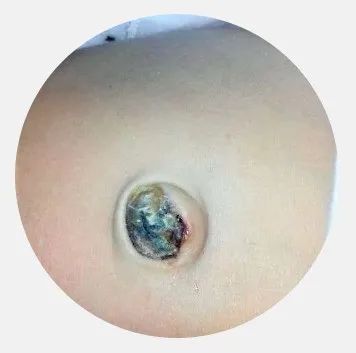Nursing of the umbilical cord of a newborn baby is an operational nursing skill that every parent needs to master. During the nursing process, parents will encounter various problems, such as:

Parents must wash their hands before doing umbilical care, wipe and disinfect the umbilicus twice a day in the morning and evening with an iodophor cotton swab. When wiping and disinfecting, pay attention to the circular disinfection from the root of the umbilicus from the inside to the outside, and the skin around the umbilicus should also be disinfected. If the iodophor cotton swab is dirty, it is necessary to replace the cotton swab in time. Before the umbilical cord falls off, do not let the umbilical area get wet or take a bath. If you swim with your baby, you must wear a waterproof sticker and disinfect the umbilicus in time. The umbilical cord and its surrounding skin should be kept dry and clean. In particular, the umbilical area should not be covered by diapers, so as to avoid urine or feces contaminating the umbilical wound surface and causing infection.

When the umbilical cord just falls off, it is necessary to continue to clean and disinfect the umbilicus every day until the umbilical recess is dry and clean before stopping nursing.
Before or just after the umbilical cord falls off, make sure that the umbilical cord and umbilical fossa are dry. Once the umbilical part is soaked with water or urine, immediately dry it with a dry cotton ball or a clean and soft gauze, and then disinfect the umbilical cord with iodophor. department. Don’t soak in the tub until the umbilical cord falls off. Avoid continuous flushing directly towards the umbilicus, use a umbilical patch to protect the umbilicus if necessary, and disinfect the umbilicus with iodophor immediately after bathing.
When the umbilical cord has not been taken off or has just fallen off, it is necessary to avoid the stimulation of the baby’s umbilical area by clothes and diapers, and do not let the diapers or clothes rub against the umbilical cord stump.
Under normal circumstances, the baby’s umbilical cord will gradually darken and harden, and fall off in 1 to 2 weeks. If the baby’s umbilical cord has not fallen off after 2 weeks, carefully observe the umbilicus: whether there is redness or suppuration; whether there is a lot of fluid leaking from the umbilical fossa; whether there is infection, if not, don’t worry, continue to disinfect the umbilical area. Can.



Omphalitis
It is manifested as redness and swelling of the soft tissue around the umbilicus, with or without exudation from the umbilical fossa, pain to touch, foul smell, and in severe cases, fever, less eating, less crying, less movement or crying, and other symptoms, you need to seek medical attention immediately.





We will contact you within 1 working day, please pay attention to the email with the suffix “info@miyocar.com”.